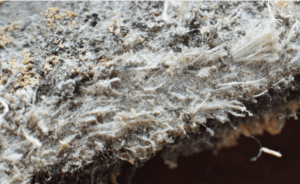Epithelioid Mesothelioma
Epithelial or epithelioid mesothelioma is the most common mesothelioma cell type. It’s also the most easily treated, as epithelioid cells aren’t quite as aggressive as the other cell types. Learn more about epithelioid mesothelioma, its signs and symptoms, how it’s diagnosed, and available treatments below.
What Is Epithelioid Mesothelioma?
Epithelioid mesothelioma is a type of cancer that develops in epithelioid cells. About 75% of mesothelioma cases are epithelial.
Epithelioid cells are rectangular and form in small clusters. They line the surfaces of your body and can be found in blood vessels, skin, and organs. However, when epithelioid cells lining the lungs, abdomen, heart, or testicles are exposed to asbestos, they can become cancerous.
Epithelioid mesothelioma is much more common than the other mesothelioma cell types, and it also responds better to treatments.
Doctors can determine if you have epithelioid mesothelioma or another cell type when making a diagnosis by viewing cell samples under a microscope. From there, they can recommend treatments to help you live longer or ease the symptoms of epithelioid mesothelioma.
Get help after an epithelioid mesothelioma diagnosis through our free mesothelioma guide.
 Free 2024 Mesothelioma Guide
Free 2024 Mesothelioma Guide- Find Cancer Resources
- Get Medical Care
- Access Compensation


Causes of Epithelioid Mesothelioma

Asbestos exposure is the primary cause of all forms of mesothelioma, including epithelial mesothelioma. Asbestos is a fiber-like substance that was used in construction products, buildings, and ships between the 1930s and early 1980s.
When asbestos is released into the air, asbestos fibers can travel into your lungs. Eventually, they can reach the mesothelium, the thin tissue layer around your inner organs, where they cause scarring and inflammation.
Over time, this may damage epithelioid cells’ DNA, causing mutations that result in uncontrolled cell growth. Most patients with epithelial mesothelioma are diagnosed 10-50 years after exposure to asbestos fibers.
Epithelioid Mesothelioma vs. Other Mesothelioma Cell Types
Epithelioid malignant mesothelioma is just one of three mesothelioma cell types that a patient can be diagnosed with.
The other types of mesothelioma are:
- Sarcomatoid mesothelioma: This is the least common and most aggressive mesothelioma cell type. It usually progresses faster than epithelioid mesothelioma and has a worse outcome. The cells are shaped like spindles and don’t stick together as easily, allowing for a faster spread.
- Biphasic mesothelioma: This is the second-most common cell type. The tumors contain both epithelioid and sarcomatoid cells. It’s easier to treat if more epithelial cells are present.
Epithelioid mesothelioma tumors spread slower compared to the other types of mesothelioma, and so patients tend to have a slightly better health outlook than those with the other cell types.
However, all three mesothelioma cell types share a common cause: asbestos exposure.
Signs & Symptoms of Epithelioid Mesothelioma
Epithelioid mesothelioma signs and symptoms are similar to those of the other cell types. However, patients experience different symptoms depending on where the cancer forms in the body.
Most patients develop epitheloid pleural mesothelioma (which forms in the lung lining).
Common symptoms of epithelioid pleural mesothelioma include:
- A persistent cough
- Chest pain
- Shortness of breath
- Unexplained appetite and weight loss
- Unusual lumps under the skin on your chest
The second-most common place epithelial mesothelioma forms is the peritoneum (abdominal lining). Epithelial peritoneal mesothelioma causes more symptoms related to digestion.
Symptoms of epithelioid peritoneal mesothelioma include:
- Abdominal swelling and pain
- Altered bowel movements
- Nausea
- Unexplained fever
- Unexplained weight loss
If you have possible symptoms of epithelioid mesothelioma, don’t wait: See a doctor immediately. Our team can help you find top doctors right now. Call (888) 360-2406 or get a free guide to learn more.
 Free 2024 Mesothelioma Guide
Free 2024 Mesothelioma Guide- Find Cancer Resources
- Get Medical Care
- Access Compensation


Diagnosing Epithelioid Mesothelioma

Getting an epithelial mesothelioma diagnosis early on is important, as it will allow you to access treatments that may help you live longer.
You’re highly encouraged to schedule a doctor’s visit if you have any possible epithelioid mesothelioma symptoms and were ever exposed to asbestos. Doctors will likely recommend diagnostic tests if they think you might have epithelial mesothelioma after an initial visit.
Tests used to diagnose epithelial mesothelioma include:
- Blood tests, which can reveal signs of mesothelioma, such as the protein calretinin, within the blood.
- Computerized tomography (CT) scans, which use X-rays and a computer to create cross-sectional images of your blood vessels, bones, and soft tissues.
Magnetic resonance imaging (MRI) scans, which create images of the structures inside your body using radio waves, a large magnet, and a computer. - Physical exams, which can help doctors locate the cause of your symptoms.
- X-rays, which are imaging studies that use small amounts of radiation to take pictures of soft tissues and bones.
If oncologists (cancer doctors) still believe you have cancer after these tests, they’ll order a biopsy. A biopsy involves removing a cell or tissue sample from your body so pathologists (doctors who study cells) can test it for cancer in a laboratory.
Biopsies are the only conclusive way to determine if you have epithelioid mesothelioma or not.
Doctors may also perform immunohistochemistry lab tests on the biopsy. These tests allow doctors to determine the specific type of mesothelioma (and the cell subtype) that’s present by looking at unique substances called markers in the sample.
Can Epithelioid Mesothelioma Be Misdiagnosed?
Yes, epithelioid mesothelioma can be misdiagnosed because this cancer is very rare and the symptoms are shared by many other health problems.
Cancer care providers may misdiagnose epithelioid pleural mesothelioma as:
- Asthma
- Bronchitis
- Chronic pulmonary obstructive disease (COPD)
- Emphysema
- Pneumonia
- Pleural effusion
- Various types of lung cancer
Doctors may misdiagnose epithelioid peritoneal mesothelioma as:
- Heart disease or failure
- Hernia
- Irritable bowel syndrome
- Ovarian cancer
- Ulcerative colitis
Types of Epithelial Mesothelioma
When making a diagnosis, doctors can also determine which type of epithelioid mesothelioma a patient has. There are several different types that a patient could be diagnosed with.
Subtypes of epithelioid mesothelioma include:
- Adenomatoid or microglandular mesothelioma, which is usually found in small gland-like structures. This type is found in 6% of all malignant pleural mesothelioma cases. These tumors could be mistaken for benign (noncancerous) adenomatoid tumors or cases of lung adenocarcinoma.
- Deciduoid mesothelioma, which has large oval cells and sharp cell borders. This type is very rare, with fewer than 50 reported cases in pleural mesothelioma patients and fewer than 30 cases in peritoneal mesothelioma patients.
- Small cell mesothelioma, which is often mistaken for small cell lung cancer (SCLC).
- Well-differentiated papillary mesothelioma, which is typically more common in women with peritoneal mesothelioma and men with testicular mesothelioma. Papillary tumors are longer and look almost like fingers.
What Are the Stages of Epithelioid Mesothelioma?
Doctors can determine a patient’s epithelial mesothelioma stage at the time of diagnosis.
There are four stages of epithelioid pleural mesothelioma:
- Stage 1: Epithelioid mesothelioma cancer cells are in the pleura around the lung on one side of your chest.
- Stage 2: The cancer has spread into the diaphragm muscle and/or nearby lung tissue.
- Stage 3: Epithelioid mesothelioma cells are found in the lining of the heart (pericardium), the chest wall, or the lymph nodes on one side of the chest.
- Stage 4: The cancer has spread throughout the body into organs like the brain and liver.
The other types of mesothelioma (pericardial, peritoneal, and testicular) don’t have official stages, but doctors can informally stage these patients with local or advanced disease.
Patients with late-stage epithelial mesothelioma typically have less time to live. However, treatment options are available to help patients no matter which stage of the cancer they’re in.
Get a free mesothelioma guide to learn more about cancer staging and finding medical help for epithelioid mesothelioma.
 Free 2024 Mesothelioma Guide
Free 2024 Mesothelioma Guide- Find Cancer Resources
- Get Medical Care
- Access Compensation


Prognosis for Epithelioid Mesothelioma
Mesothelioma prognosis, or the expected outcome after a diagnosis, is generally poor. However, epithelial mesothelioma patients have a slightly better prognosis than those with the other cell types.
Mesothelioma prognosis is measured using life expectancy (average amount of time patients live) and survival rate (number of patients still alive after a set number of years have passed).
- According to a report by the Journal of Surgical Research, patients who received surgery had a median life expectancy of 19 months.
- The overall 5-year survival time of epithelioid mesothelioma patients is 16%. This means that only 16% of epithelioid mesothelioma patients are still alive five years after diagnosis.
- The median life expectancy for epithelioid mesothelioma victims who did not receive treatment is just 14 months.
Treatments for Epithelioid Mesothelioma
Although epithelioid mesothelioma has a poor prognosis, treatments can possibly increase your life expectancy. Treatments for mesothelioma allow doctors to shrink cancer tumors or remove them from the body.
Top epithelioid mesothelioma treatments include:
- Mesothelioma surgery: With surgery, doctors can remove tumors and nearby tissue. Patients with epithelioid mesothelioma tumors are more likely to qualify for surgery than those with other cell types. Common surgeries include pleurectomy with decortication (P/D), extrapleural pneumonectomy (EPP), and cytoreductive surgery with heated chemotherapy (HIPEC).
- Chemotherapy: Doctors use anti-cancer drugs to reduce mesothelioma symptoms and shrink tumors.
- Clinical trials: Clinical trials are research studies that test new and possibly more effective epithelial mesothelioma treatments. Ask your doctor if there are clinical trials you can join.
- Immunotherapy: These medications improve the immune system’s cancer response to destroy epithelial mesothelioma cells and tumors.
- Radiation therapy: This involves using X-rays and other types of radiation to damage the DNA of epithelioid mesothelioma cells so they can’t divide and spread.
- Multimodal therapy: Doctors may combine multiple mesothelioma treatments to help epithelioid mesothelioma patients. A short accelerated course of radiation therapy followed by an EPP and chemotherapy increased the 3-year survival rate of epithelial mesothelioma patients to 84% in a recent study.
Doctors will determine the best epithelial mesothelioma treatments for you based on what subtype and stage of this cancer you have, where it formed in your body, and your overall health.
Next Steps for Epithelioid Mesothelioma Patients
An epithelioid mesothelioma diagnosis can be stressful and traumatic. Thankfully, you and your family don’t have to face this cancer alone.
Mesothelioma Resource Group can connect you with top mesothelioma doctors and medical treatments to hopefully help you live longer. Our on-staff nurses have decades of experience helping mesothelioma patients.
Further, while affording medical care can be daunting, our team can help you pursue financial compensation to cover any expenses. Get started now with a free case review.
Epithelioid Mesothelioma FAQs
What is the survival rate of epithelioid mesothelioma?
The 5-year median survival rate of epithelioid mesothelioma patients is only 16%. While this is very low, it may be possible to live for decades with the right treatment — particularly if you’re diagnosed in an early stage.
Is epithelioid mesothelioma curable?
Epithelioid mesothelioma is generally not curable. However, a handful of patients are able to achieve long-term survival through proper medical care.
Epithelial mesothelioma is slightly easier to treat compared to the other two cell types, so patients may be able to live longer if they’re diagnosed at an early stage.
Can epithelioid mesothelioma go into remission?
Yes, in rare cases, epithelioid remission is possible. Remission occurs when cancer tumors shrink or disappear completely. Treatment is the best way to achieve epithelial mesothelioma remission.
How does epithelioid mesothelioma spread?
Epithelioid malignant mesothelioma tumors often form multiple nodules and spread locally before extending to lymph nodes and other organs.
This cancer can spread very quickly without medical treatment, which is why you’re encouraged to get a diagnosis as soon as possible if you might have cancer.
